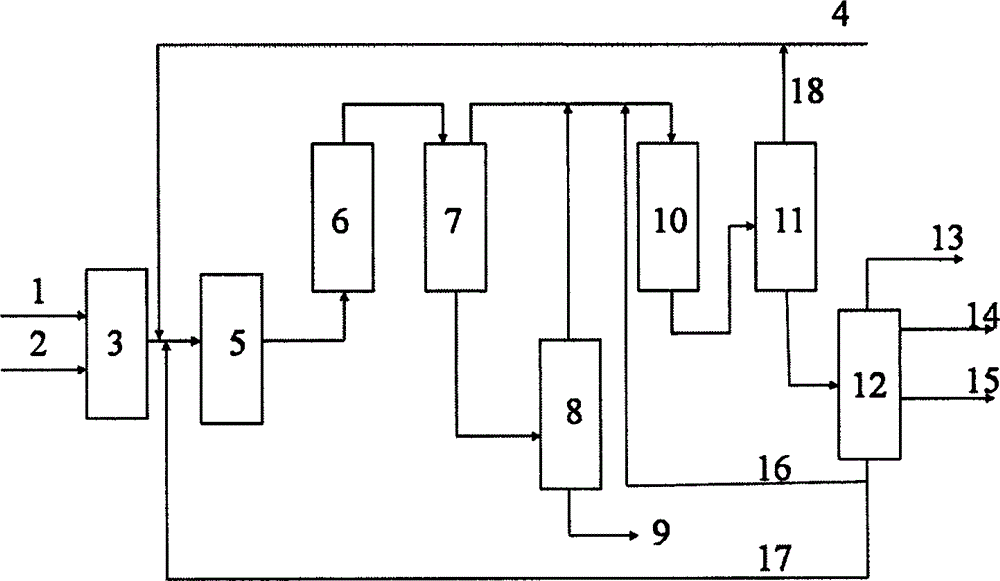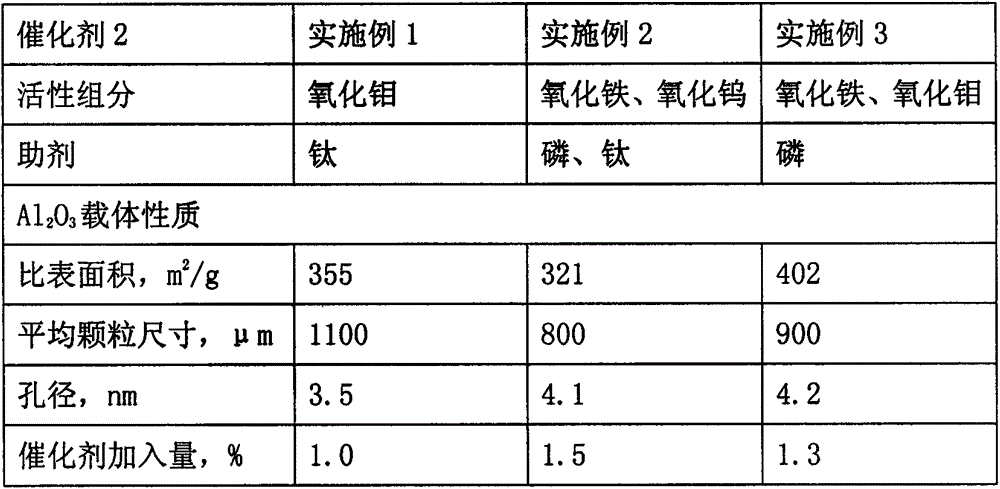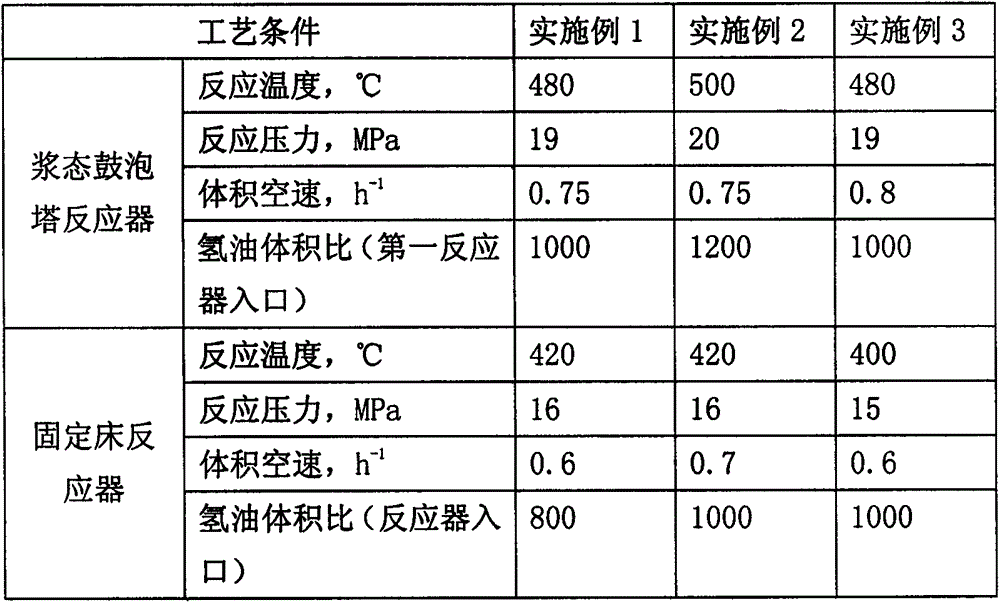Coal tar hydrogenation whole-fraction method
A technology for full fraction, coal tar, applied in hydrotreating process, treatment of hydrocarbon oil, petroleum industry, etc., can solve the problems of increasing operating costs, the yield of light oil products needs to be further improved, etc., to improve the utilization rate, increase the The yield of light oil products, the scientific and reasonable effect of the process
- Summary
- Abstract
- Description
- Claims
- Application Information
AI Technical Summary
Problems solved by technology
Method used
Image
Examples
Embodiment 1
[0027] The whole distillate of a kind of low-temperature coal tar is used as raw material, which is recorded as 1# raw material oil, and its properties are shown in Table 1. Coal tar raw material and catalyst 2 are evenly mixed and enter two series-connected slurry bubble column reactors for hydrocracking reaction. Coal tar raw material, catalyst 2 and hydrogen enter from the bottom of the slurry bubble column reactor and flow out from the top, and the catalyst The properties of 2 are shown in Table 2, and the process conditions of slurry bubble column hydrogenation are shown in Table 3. The primary product after hydrocracking removes the catalyst 2 and then enters the fixed bed reactor for further hydrocracking and hydrofining reactions. The primary product enters from the top of the fixed bed reactor and flows out from the bottom, passing through the fixed bed hydrocracking catalyst and hydrogenation See Table 3 for the hydrogen refining catalyst and fixed bed hydrogenation ...
Embodiment 2
[0029] A whole distillate of high-temperature coal tar is used as raw material, which is recorded as 2# raw material oil, and its properties are shown in Table 1. Coal tar raw material and catalyst 2 are mixed evenly and enter three series-connected slurry bubble column reactors for hydrocracking reaction. Coal tar raw material, catalyst 2 and hydrogen enter from the bottom of the slurry bubble column reactor and flow out from the top, and the catalyst The properties of 2 are shown in Table 2, and the process conditions of slurry bubble column hydrogenation are shown in Table 3. The primary product after hydrocracking removes the catalyst 2 and then enters the fixed bed reactor for further hydrocracking and hydrofining reactions. The primary product enters from the top of the fixed bed reactor and flows out from the bottom, passing through the fixed bed hydrocracking catalyst and hydrogenation See Table 3 for the hydrogen refining catalyst and fixed bed hydrogenation process c...
Embodiment 3
[0031] A high-temperature coal tar full fraction and a low-temperature coal tar full fraction are mixed at a mass ratio of 1:1 as a coal tar raw material, which is recorded as 3# raw material oil, and its properties are shown in Table 1. Coal tar raw material and catalyst 2 are mixed evenly and enter three series-connected slurry bubble column reactors for hydrocracking reaction. Coal tar raw material, catalyst 2 and hydrogen enter from the bottom of the slurry bubble column reactor and flow out from the top, and the catalyst The properties of 2 are shown in Table 2, and the process conditions of slurry bubble column hydrogenation are shown in Table 3. The primary product after hydrocracking removes the catalyst 2 and then enters the fixed bed reactor for further hydrocracking and hydrofining reactions. The primary product enters from the top of the fixed bed reactor and flows out from the bottom, passing through the fixed bed hydrocracking catalyst and hydrogenation See Table...
PUM
 Login to View More
Login to View More Abstract
Description
Claims
Application Information
 Login to View More
Login to View More - R&D
- Intellectual Property
- Life Sciences
- Materials
- Tech Scout
- Unparalleled Data Quality
- Higher Quality Content
- 60% Fewer Hallucinations
Browse by: Latest US Patents, China's latest patents, Technical Efficacy Thesaurus, Application Domain, Technology Topic, Popular Technical Reports.
© 2025 PatSnap. All rights reserved.Legal|Privacy policy|Modern Slavery Act Transparency Statement|Sitemap|About US| Contact US: help@patsnap.com



